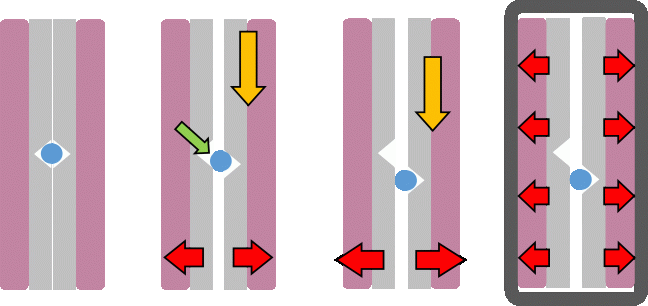This is part of my Brief Guide To Brakes series – a result of my research for Edinsolar, the University of Edinburgh’s solar vehicle team.

HOW IT WORKS
• 2 flat rings have conical ‘divots’ (small holes) on one side of them and brake pad material on the other
• The 2 rings placed together with the divot sides facing each other
• Ball bearings in each pair of the divots
• When the rings are rotated relative to each other, the balls roll up the ramp faces of the conical divots, pushing apart the two rings.
• The outer brake pad material on the rings pushes against the inside walls of the hollow disc
• Friction slows down the disc

• One ring is fixed and the other spins freely without a stop
• The direction of the free ring’s rotation is the same as the hollow disc
• Disc pulls ring in direction that further applies the brake
o This makes the brakes self-energising
• When the disc rotates in the opposite direction of ring rotation
o This makes the brakes self-releasing
ADVANTAGES
Lighter pedal pressure than caliper discs
Less fade, cooler running, and more friction surface than comparable drum brakes.
Reliable
Powerful
DISADVANTAGES
Grabby
Oversensitive
When they were manufactured in 1950 they it was reported that “Chrysler reportedly used either too few cones and balls, or cones or balls that were not hard enough given the number used; they could deform under brake load, leading to brake failures. “


